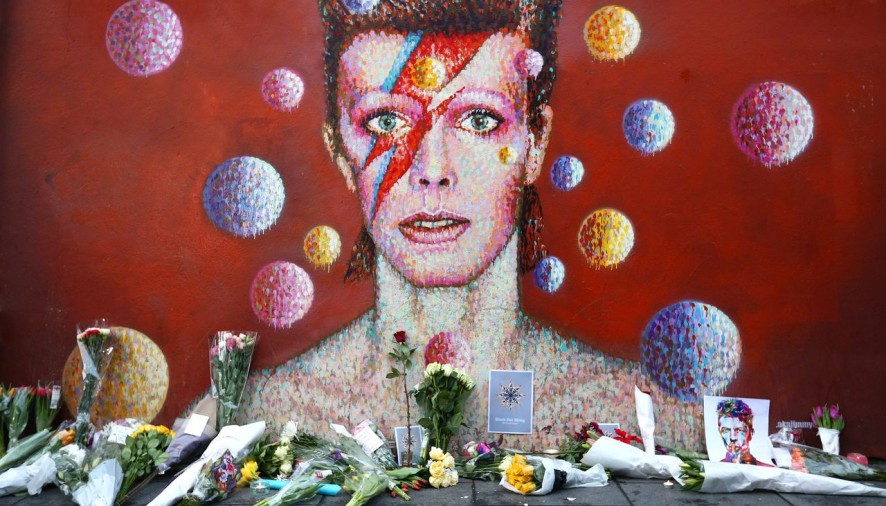Bowie released his debut, self-titled album on the same day as Sgt Pepper’s Lonely Heart Club Band, and while it might not have had the same impact as the Beatles album it did show one thing – David Bowie would always be inextricably tied to greatness.
Through his 25 albums Bowie spanned psychedelia, folk-rock, grandiose orchestral pop, glam-rock, krautrock, disco, soul, jazz. What’s all the more impressive is he didn’t just flirt with the genres but fully immersed himself in them and rarely failed to produce something breath-taking.
Coming at a time where bisexuality was taboo and gender was black and white, he joked that him and his first wife Angie met “whilst fucking the same guy” and in 1970 he donned a dress on the cover of The Man Who Sold the World.
And then came Ziggy. The androgynous, alien, bisexual Ziggy. With it came a water-shed moment where music became the haven for the weird and wonderful and since then art has never been the same.
Bowie’s alter-egos became a crucial part of his longevity. By detaching himself completely from the biographical and the personal, he put the focus completely on the art. It allowed him to not be tied down by genre, gender, themes – basically any earthly ties. The idea of David Bowie floated away and was replaced by Major Tom, Ziggy Stardust, Aladdin Sane, the Thin White Duke and Halloween Jack.
So inhuman was Bowie that he was cast as an alien in 1976’s The Man Who Fell to Earth and won himself a Saturn Award for his performance. After that he would indulge in acting all too rarely with appearances in Twin Peaks: Fire Walk with Me, Zoolander and (hilariously) Extras.
Just when he became a glam-rock superstar he delved into American funk and soul, once he did that he retreated to Berlin. There he teamed up with Brian Eno and created three krautrock masterpieces Heroes, Low and Lodger. What’s even more impressive is that in the gaps between albums he produced Iggy Pop’s The Idiot and Lust For Life. His time in Berlin would be looked back on 35 years later in the heart-wrenching ‘Where Are We Now?’
Bowie was completely about art. Despite his last interview being in 2003, he was a constant presence and it’s hard to think of any artist post-1975 that hasn’t been influenced by him in some way.
His latest album Blackstar was released 2 days before his death receiving wide acclaim for his abandonment of pop and embracing of Jazz and world-music influences. It was unexpected, as was everything with David Bowie. He was always two steps ahead of everyone else.
So far ahead of the rest of us was he that he hinted as to his upcoming death in the days before and we didn’t realise. The video for ‘Lazarus’, released three days before his death showed a fragile Bowie on a hospital bed. The last Twitter account Bowie followed? God.
However, even with this in mind, I’m hesitant to view Blackstar as wholly autobiographical or brilliant solely because of his death. His emphasis was on artistry for half a century and I don’t think he would have wanted his last album to be viewed differently – it’s too good for that.
Always so much more than music, the German Foreign Office released a statement thanking Bowie for his effort in helping take down the Berlin Wall. If anything shows how far his influence reached I think that’s it.
More than anything he made being an outsider not only acceptable but something to be proud of: chameleonic in his art, enigmatic in his celebrity, devastating in his absence.
Alex Fowler
photo: Carl Court

